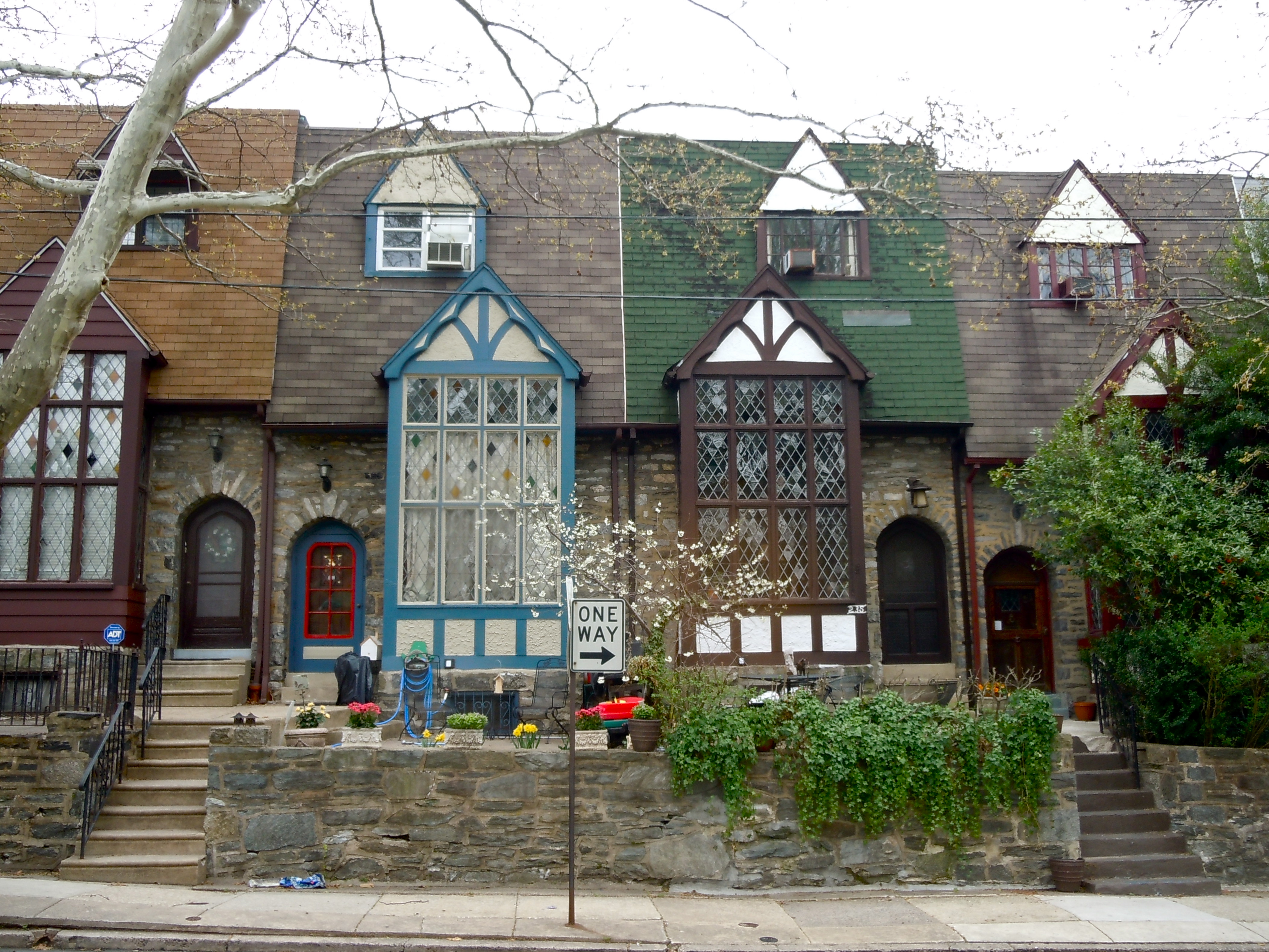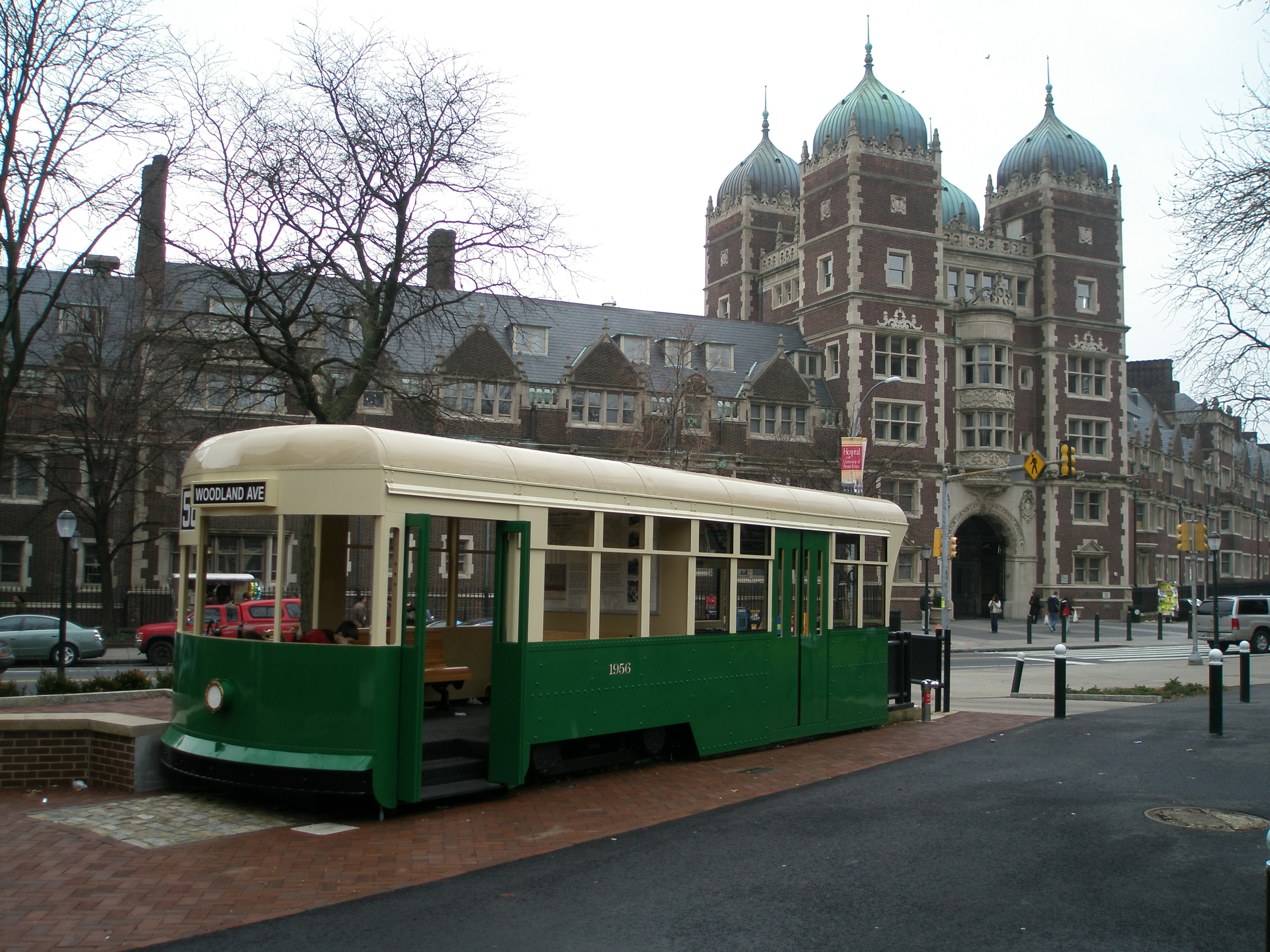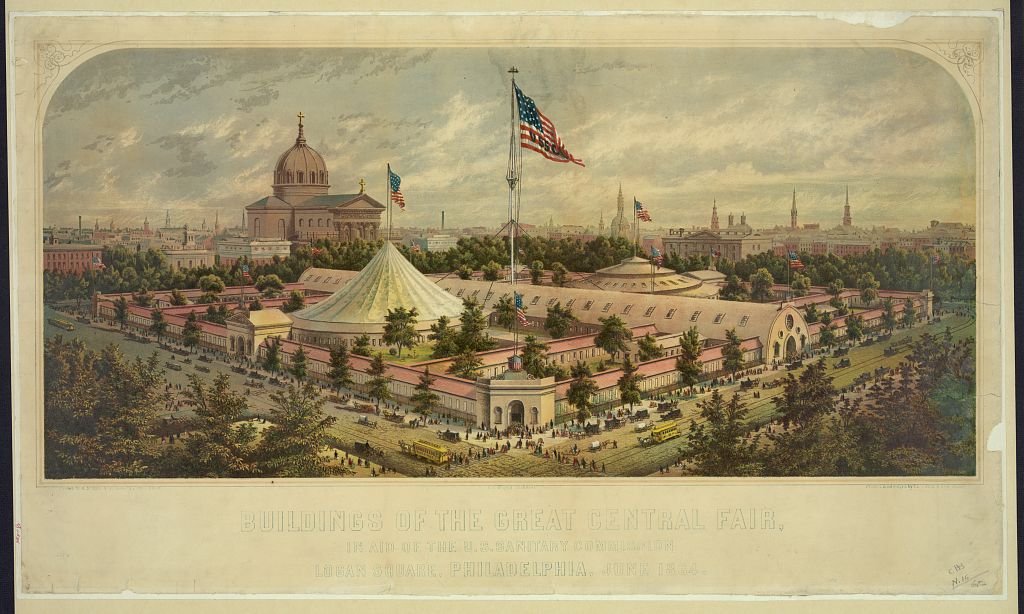|
William Sellers
William Sellers (September 19, 1824 – January 24, 1905) was a mechanical engineer, manufacturer, businessman, noted abolitionist, and inventor who filed more than 90 patents, most notably the design for the United States Standard thread, United States standard screw thread, the standard bolt and machine screw thread still used today. As president of the Franklin Institute in Philadelphia, Pennsylvania, Sellers proposed the adoption of a system of screw threads which was easier for ordinary mechanics and machinists to cut than a similar design by Joseph Whitworth. For many years, he led the machine tool firm of William Sellers & Co., which was a very influential machine tool builder during the latter half of the 19th century. Family Sellers was born in Upper Darby Township, Pennsylvania, to John and Elizabeth (Poole) Sellers, into a Quaker family full of industrial and manufacturing innovators. His cousins include George Escol Sellers (1808–1899), an inventor holding patents ... [...More Info...] [...Related Items...] OR: [Wikipedia] [Google] [Baidu] [Amazon] |
Upper Darby Township, Pennsylvania
Upper Darby Township, often shortened to Upper Darby, is a Home Rule Municipality (Pennsylvania), home rule Township (Pennsylvania), township in Delaware County, Pennsylvania, United States. As of the 2020 census, the township had a total population of 85,681, making it the state's List of municipalities in Pennsylvania, sixth-most populated municipality after Philadelphia, Pittsburgh, Allentown, Pennsylvania, Allentown, Reading, Pennsylvania, Reading, and Erie, Pennsylvania, Erie. Upper Darby borders Philadelphia, the nation's List of United States cities by population, sixth-most populous city, and constitutes part of the Delaware Valley, also known as the Philadelphia metropolitan area, the nation's Metropolitan statistical area, seventh-largest metropolitan area. Upper Darby is home to the Tower Theater (Pennsylvania), Tower Theater, a historic music venue on 69th Street built in the 1920s, and to several Underground Railroad sites. In August 2019, the radio tower on top of ... [...More Info...] [...Related Items...] OR: [Wikipedia] [Google] [Baidu] [Amazon] |
University Of Pennsylvania
The University of Pennsylvania (Penn or UPenn) is a Private university, private Ivy League research university in Philadelphia, Pennsylvania, United States. One of nine colonial colleges, it was chartered in 1755 through the efforts of founder and first president Benjamin Franklin, who had advocated for an educational institution that trained leaders in academia, commerce, and public service. The university has four undergraduate schools and 12 graduate and professional schools. Schools enrolling undergraduates include the College of Arts and Sciences, the University of Pennsylvania School of Engineering and Applied Science, School of Engineering and Applied Science, the Wharton School, and the University of Pennsylvania School of Nursing, School of Nursing. Among its graduate schools are its University of Pennsylvania Law School, law school, whose first professor, James Wilson (Founding Father), James Wilson, helped write the Constitution of the United States, U.S. Cons ... [...More Info...] [...Related Items...] OR: [Wikipedia] [Google] [Baidu] [Amazon] |
1824 Births
Events January–March * January 1 – John Stuart Mill begins publication of The Westminster Review. The first article is by William Johnson Fox * January 8 – After much controversy, Michael Faraday is finally elected as a member of the Royal Society in London, with only one vote against him. * January 21 – First Anglo-Ashanti War: Battle of Nsamankow – forces of the Ashanti Empire crush British forces in the Gold Coast (British colony), Gold Coast (modern-day History of Ghana, Ghana), killing the British governor Charles MacCarthy (British Army officer), Sir Charles MacCarthy. * January 24 – The first issue of ''The Westminster Review'', the radical quarterly founded by Jeremy Bentham, is published in London. * February 10 – Simón Bolívar is proclaimed dictator of Peru. * February 20 — William Buckland formally announces the name ''Megalosaurus'', the first scientifically validly named non-avian dinosaur species. * February 21 – The Chumash Revolt of 1824 ... [...More Info...] [...Related Items...] OR: [Wikipedia] [Google] [Baidu] [Amazon] |
Légion D'honneur
The National Order of the Legion of Honour ( ), formerly the Imperial Order of the Legion of Honour (), is the highest and most prestigious French national order of merit, both military and Civil society, civil. Currently consisting of five classes, it was originally established in 1802 by Napoleon, Napoleon Bonaparte, and it has been retained (with occasional slight alterations) by all later French governments and regimes. The order's motto is ' ("Honour and Fatherland"); its Seat (legal entity), seat is the Palais de la Légion d'Honneur next to the Musée d'Orsay, on the left bank of the Seine in Paris. Since 1 February 2023, the Order's grand chancellor has been retired General François Lecointre, who succeeded fellow retired General Benoît Puga in office. The order is divided into five degrees of increasing distinction: ' (Knight), ' (Officer), ' (Commander (order), Commander), ' (Grand Officer) and ' (Grand Cross). History Consulate During the French Revolution, all ... [...More Info...] [...Related Items...] OR: [Wikipedia] [Google] [Baidu] [Amazon] |
Exposition Universelle (1889)
The of 1889 (), better known in English as the 1889 Paris Exposition, was a world's fair held in Paris, France, from 6 May to 31 October 1889. It was the fifth of ten major expositions held in the city between 1855 and 1937. It attracted more than thirty-two million visitors. The most famous structure created for the exposition, and still remaining, is the Eiffel Tower. Organization The exposition was held to celebrate the 100th anniversary of the Storming of the Bastille, which marked the beginning of French Revolution, and was also seen as a way to stimulate the economy and pull France out of an economic recession. The exposition attracted 61,722 official exhibitors, of whom twenty-five thousand were from outside of France. Admission price Admission to the exposition cost forty centimes, at a time when the price of an "economy" plate of meat and vegetables in a Paris cafe was ten centimes. Visitors paid an additional price for several of the exposition's most popular att ... [...More Info...] [...Related Items...] OR: [Wikipedia] [Google] [Baidu] [Amazon] |
Weltausstellung 1873 Wien
The 1873 Vienna World's Fair () was the large world exposition that was held from 1 May to 31 October 1873 in the Austria-Hungarian capital Vienna. Its motto was "Culture and Education" (). History As well as being a chance to showcase Austro-Hungarian industry and culture, the World's Fair in Vienna commemorated Franz JosephI's 25th year as emperor. The main grounds were in the Prater, a park near the Danube River, and preparations cost £23.4 million. It lasted from May 1 to November 2, hosting about 7,225,000 visitors. Facilities There were almost 26,000 exhibitors housed in different buildings that were erected for this exposition, including the '' Rotunda'' (), a large circular building in the great park of Prater designed by the Scottish engineer John Scott Russell. (The fair Rotunda was destroyed by fire on 17 September 1937.) Russian pavilion The Russian pavilion had a naval section designed by Viktor Hartmann. Exhibits included models of the Port of Rijeka and the ... [...More Info...] [...Related Items...] OR: [Wikipedia] [Google] [Baidu] [Amazon] |
Cassier's Magazine
''Cassier's Magazine: An Engineering Monthly'' was an engineering magazine, published by the Cassier Magazine Company from 1891 to 1913. History The magazine was established by Louis Cassier (1862–1906) in 1891. He was the editor until his death in the 1906 Salisbury rail crash in Great Britain. Henry Harrison Suplee (1856 – after 1943) then took over as the publisher. The headquarters was in New York City. A London edition was launched in the autumn of 1894. The magazine ceased publication in 1913. References External links''Cassier's Magazine'' at the Smithsonian Libraries 1891 establishments in New York (state) 1913 disestablishments in New York (state) Defunct magazines published in the United States Engineering magazines Magazines disestablished in 1913 Magazines established in 1891 Magazines published in New York City Monthly magazines published in the United States Science and technology magazines published in the United States {{sci-mag-stub ... [...More Info...] [...Related Items...] OR: [Wikipedia] [Google] [Baidu] [Amazon] |
Exposition Universelle (1867)
The of 1867 (), better known in English as the 1867 Paris Exposition, was a world's fair held in Paris, Second French Empire, France, from 1 April to 3 November 1867. It was the List of world expositions, second of ten major expositions held in the city between 1855 and 1937. A number of nations were represented at the fair. Following a decree of Napoleon III of France, Emperor Napoleon III, the exposition was prepared as early as 1864, in the midst of Haussmann's renovation of Paris, the renovation of Paris, marking the culmination of the Second French Empire. Visitors included Tsar Alexander II of Russia, a brother of the William I, German Emperor, King William and Otto von Bismarck of Prussia, Prince Metternich and Franz Josef of Austria, Ottoman Sultan Abdülaziz, and the Khedive of Egypt Isma'il Pasha, Isma'il. Conception In 1864, Napoleon III of France, Napoleon III issued a decree stating that an international exposition should be held in Paris in 1867. A Government a ... [...More Info...] [...Related Items...] OR: [Wikipedia] [Google] [Baidu] [Amazon] |
Société D'encouragement Pour L'industrie Nationale
The Société d'encouragement pour l'industrie nationale (; ) is an organization established in 1801 to support French industry. Over the years it has provided prizes and support to inventors, promoted transfer of technology and management techniques, sponsored efforts to improve safety and efficiency and reduce pollution, and promoted vocational education. Foundation In 1800 Napoleon was firmly in power as ruler of France and continental peace seemed assured. Napoleon resolved to make French industry greater than that of all other nations, particularly England. At the initiative of the Minister of Interior Jean-Antoine Chaptal, the second Exposition des produits de l'industrie française was held in Paris from 19–25 September 1801. Following this, a preparatory meeting for the Société d'encouragement pour l'industrie nationale was held on 4 October 1801 to discuss the formation of a society similar to the British Royal Society of Arts to encourage and improve French industry ... [...More Info...] [...Related Items...] OR: [Wikipedia] [Google] [Baidu] [Amazon] |
United States National Academy Of Sciences
The National Academy of Sciences (NAS) is a United States nonprofit, non-governmental organization. NAS is part of the National Academies of Sciences, Engineering, and Medicine, along with the National Academy of Engineering (NAE) and the National Academy of Medicine (NAM). As a national academy, new members of the organization are elected annually by current members, based on their distinguished and continuing achievements in original research. Election to the National Academy is one of the highest honors in the scientific field in the United States. Members of the National Academy of Sciences serve '' pro bono'' as "advisers to the nation" on science, engineering, and medicine. The group holds a congressional charter under Title 36 of the United States Code. Congress legislated and President Abraham Lincoln signed an Act of Congress (1863) establishing the National Academy of Sciences as an independent, trusted nongovernmental institution, created for the purpose of ... [...More Info...] [...Related Items...] OR: [Wikipedia] [Google] [Baidu] [Amazon] |
Midvale Steel
Midvale Steel was a succession of steel-making corporations whose flagship plant was the Midvale Steel Works in Nicetown, Philadelphia, Pennsylvania. The mill operated from 1867 until 1976. In the 1880s, Frederick Winslow Taylor rose through the ranks at Midvale, from lathe operator, to gang boss, to engineer, to chief engineer of the works. During this time he developed the core of his philosophy of scientific management. Overview Midvale produced high-quality steels (including many alloy steels) and the casting, forging, and machining needed to use them in special applications such as heavy artillery (naval, coastal, and field); steam turbines; naval armor plate; and pressure vessels for use in chemical plants (for example, petroleum refineries). Midvale also helped pioneer the steel formulas used in the early automotive industry.. Midvale was never a particularly large company (relative to giants such as Carnegie, Bethlehem, and U.S. Steel), and the flagship Nicetown p ... [...More Info...] [...Related Items...] OR: [Wikipedia] [Google] [Baidu] [Amazon] |
Centennial Exposition
The Centennial International Exhibition, officially the International Exhibition of Arts, Manufactures, and Products of the Soil and Mine, was held in Philadelphia, Pennsylvania, from May 10 to November 10, 1876. It was the first official world's fair to be held in the United States and coincided with the centennial anniversary of the United States Declaration of Independence, Declaration of Independence's adoption in Philadelphia on July 4, 1776. It was held in Fairmount Park along the Schuylkill River on fairgrounds designed by Herman J. Schwarzmann. Nearly 10 million visitors attended the exposition, and 37 countries participated in it. Precursor The Great Central Fair on Logan Square, Philadelphia, Logan Square in Philadelphia, in 1864, also known as the Great Sanitary Fair, was one of the many United States Sanitary Commission's Sanitary Fairs held during the American Civil War. The fairs provided a creative and communal means for ordinary citizens to promote the ... [...More Info...] [...Related Items...] OR: [Wikipedia] [Google] [Baidu] [Amazon] |




